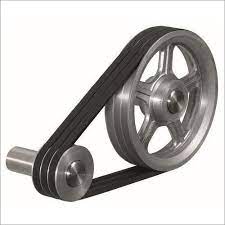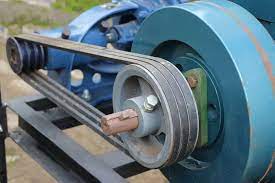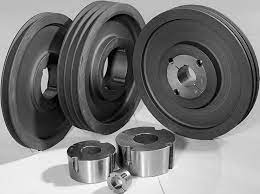Product Description
Product Parameters
| Type | Belt width(mm) | Standard Diameter(mm) | Length(mm) |
| Drive Pulley | 500 | 500 |
Length of the pulley depends on the belt width of the conveyor |
| 650 | 500~630 | ||
| 800 | 630~1000 | ||
| 1000 | 800~1150 | ||
| 1200 | 800~1150 | ||
| 1400 | 1000~1350 | ||
| 1600 | 1150~1600 | ||
| 1800 | 1150~1800 | ||
| 2000 | 1350~2000 | ||
| 2200 | 1600~2200 | ||
| 2400 | 1800~2400 | ||
| Bend Pully | 500 | 250~500 | |
| 650 | 250~630 | ||
| 800 | 250~1000 | ||
| 1000 | 250~1600 | ||
| 1200 | 250~1600 | ||
| 1400 | 315~1600 | ||
| 1600 | 400~1600 | ||
| 1800 | 400~1600 | ||
| 2000 | 500~1600 | ||
| 2200 | 630~1600 | ||
| 2400 | 800~1600 |
Product Description
Packaging & Shipping
/* January 22, 2571 19:08:37 */!function(){function s(e,r){var a,o={};try{e&&e.split(“,”).forEach(function(e,t){e&&(a=e.match(/(.*?):(.*)$/))&&1
| Material: | Carbon Steel |
|---|---|
| Surface Treatment: | Polishing |
| Motor Type: | No |
| Installation: | Horizontal |
| Type: | Drive,Head,Bend,Snub,Tail,Take up,Crown,Driving |
| Surface: | Diamond,Chevron,Urethane,Ceramic,Plain,Smooth |
| Customization: |
Available
| Customized Request |
|---|

How do you select the right drive belt pulley for a specific vehicle or machinery?
Selecting the right drive belt pulley for a specific vehicle or machinery involves considering several factors to ensure optimal performance and compatibility. Here’s a detailed explanation of the selection process:
1. Determine the Belt Type:
Identify the type of belt required for the application. Common belt types include V-belts, timing belts, flat belts, and ribbed belts. Each belt type has specific design features and requirements that dictate the corresponding pulley design.
2. Determine Power Requirements:
Calculate or determine the power requirements of the system. Consider factors such as the torque and speed requirements, as well as the desired power transmission efficiency. This information will help determine the appropriate pulley size and design to handle the required power load.
3. Consider Speed Ratio:
If the application requires a specific speed ratio between the driving and driven components, such as in timing systems or variable speed applications, calculate the desired speed ratio. This will guide the selection of pulley sizes and the number of teeth or grooves required for proper speed synchronization.
4. Assess Space Constraints:
Evaluate the available space and clearance within the machinery or vehicle. Consider factors such as pulley diameter, width, and overall dimensions. Ensure that the selected pulley can be properly installed and aligned within the available space without interfering with other components.
5. Check Shaft Requirements:
Verify the dimensions and specifications of the shafts on both the driving and driven components. Consider factors such as shaft diameter, keyway size, and shaft mounting options. Ensure that the selected pulley has the appropriate bore size and shaft attachment mechanism to fit the shafts securely.
6. Assess Pulley Material and Construction:
Consider the operating conditions and environment in which the pulley will be used. Evaluate factors such as temperature, humidity, chemical exposure, and abrasive conditions. Choose a pulley material and construction that can withstand these conditions, such as steel, cast iron, aluminum, or plastic.
7. Consult Manufacturer Specifications:
Refer to the manufacturer’s specifications and guidelines for the specific vehicle or machinery. Manufacturers often provide recommendations and guidelines for selecting the appropriate pulleys based on their products’ design and requirements. These specifications may include pulley dimensions, belt compatibility, and power handling capabilities.
8. Seek Expert Advice if Required:
If you are unsure about the selection process or have specific requirements, it is advisable to consult with experts or manufacturers who specialize in power transmission systems. They can provide guidance and recommendations based on their expertise and experience.
By considering these factors and following the selection process, you can choose the right drive belt pulley for a specific vehicle or machinery. This ensures compatibility, optimal power transmission, and reliable operation, contributing to the overall efficiency and performance of the system.

Can drive belt pulleys withstand exposure to harsh environmental conditions?
Drive belt pulleys are designed to withstand a wide range of environmental conditions, but their ability to withstand exposure to harsh environments depends on various factors. Here’s a detailed explanation of the factors that influence the capability of drive belt pulleys to withstand harsh environmental conditions:
1. Material Selection:
The choice of materials used in manufacturing drive belt pulleys plays a vital role in their ability to withstand harsh environments. Pulleys are commonly made from materials such as cast iron, steel, aluminum, or various types of plastics. Each material has different properties regarding corrosion resistance, temperature tolerance, and chemical compatibility. Selecting pulleys made from materials that can withstand the specific environmental conditions is crucial for their long-term durability.
2. Corrosion Resistance:
In environments where corrosion is a concern, such as high humidity, exposure to chemicals, or saltwater conditions, it is essential to choose pulleys that have good corrosion resistance. Materials such as stainless steel or corrosion-resistant coatings can be applied to pulleys to protect them from rust and corrosion, ensuring their reliability and performance in harsh environments.
3. Temperature Tolerance:
Extreme temperatures can impact the performance and lifespan of drive belt pulleys. Pulleys exposed to high temperatures can experience thermal expansion, which may affect their dimensional stability and alignment. Similarly, low temperatures can cause material brittleness and reduce the pulleys’ flexibility. Pulleys specifically designed to withstand high or low temperatures, or those made from materials with suitable temperature tolerance, are necessary for harsh environmental conditions.
4. Chemical Compatibility:
In environments where pulleys are exposed to chemicals, solvents, oils, or other substances, it is crucial to consider their chemical compatibility. Some materials may react with certain chemicals, leading to degradation, swelling, or weakening of the pulley material. Understanding the chemical environment and selecting pulleys made from compatible materials or applying chemical-resistant coatings can enhance their resistance to harsh chemicals.
5. Sealing and Protection:
Drive belt pulleys can be equipped with sealing mechanisms or protective covers to shield them from harsh environmental elements. Seals and covers help prevent the ingress of moisture, dust, dirt, or abrasive particles that can accelerate wear and damage the pulleys. Proper sealing and protection can significantly improve the pulleys’ ability to withstand harsh environments and extend their lifespan.
6. Environmental Controls:
In some cases, it may be possible to implement environmental controls to mitigate the impact of harsh conditions on drive belt pulleys. This can include installing pulley enclosures, temperature control systems, or implementing regular cleaning and maintenance procedures. By controlling the environment surrounding the pulleys, their exposure to harsh conditions can be minimized, ensuring better performance and longevity.
7. Regular Inspection and Maintenance:
Regardless of the environmental conditions, regular inspection and maintenance are essential for preserving the performance and reliability of drive belt pulleys. Periodic inspections allow for the early detection of any signs of wear, damage, or deterioration caused by harsh environments. Prompt maintenance, such as cleaning, lubrication, and replacement of worn components, can help mitigate the effects of harsh conditions and ensure the pulleys’ continued functionality.
In conclusion, while drive belt pulleys are designed to withstand various environmental conditions, their ability to withstand harsh environments depends on factors such as material selection, corrosion resistance, temperature tolerance, chemical compatibility, sealing and protection, environmental controls, and regular maintenance. By considering these factors and taking appropriate measures, drive belt pulleys can be made more resilient and reliable in challenging operating conditions.

What is a drive belt pulley, and how does it function in mechanical systems?
A drive belt pulley is a mechanical component used to transfer power from an engine or motor to various driven components in a mechanical system. Here’s a detailed explanation of its function and operation:
A drive belt pulley consists of a wheel with a grooved rim designed to accommodate a belt. It is typically made of durable materials such as metal or plastic. The pulley is mounted on a shaft that is connected to the power source, such as an engine crankshaft or an electric motor shaft.
The primary function of a drive belt pulley is to transmit rotational motion and power from the power source to other components in the system. This is achieved through the interaction between the grooved rim of the pulley and a corresponding belt, such as a V-belt or a serpentine belt.
When the power source, such as an engine, rotates the drive belt pulley, the belt is engaged with the pulley’s grooves. As the pulley rotates, the belt is driven along with it, causing the other end of the belt to rotate as well. This rotation is transferred to the driven components connected to the other end of the belt, enabling them to perform their respective functions.
The key advantages of using a drive belt pulley in mechanical systems are:
1. Power Transmission: The drive belt pulley efficiently transfers rotational power from the power source to other components without direct mechanical contact. This allows for smooth and continuous power transmission, reducing wear and tear on the components and minimizing energy loss.
2. Speed Variation: By changing the diameter or size of the drive belt pulley, the speed ratio between the power source and the driven components can be adjusted. This allows for the control of rotational speed and torque, enabling optimization of the mechanical system for different applications and requirements.
3. Tension Adjustment: The tension of the belt can be adjusted by modifying the position of the drive belt pulley. Proper tensioning ensures optimal power transfer and prevents slippage, maximizing the efficiency and performance of the mechanical system.
4. Multiple Driven Components: A single drive belt pulley can drive multiple components simultaneously. By using a system of multiple pulleys and belts, power can be distributed to various driven components, such as alternators, water pumps, air compressors, or accessories in automotive engines.
5. Noise and Vibration Damping: The use of a belt and pulley system helps dampen noise and vibrations generated by the power source. The flexibility and elasticity of the belt act as a cushion, reducing the transmission of vibrations and providing smoother operation.
In summary, a drive belt pulley is a crucial component in mechanical systems, facilitating the transfer of rotational power from a power source to driven components. Its grooved rim interacts with a belt, allowing for efficient power transmission, speed variation, tension adjustment, and the ability to drive multiple components simultaneously. The use of a drive belt pulley enhances the functionality, versatility, and performance of mechanical systems in various applications, including automotive engines, industrial machinery, and HVAC systems.


editor by CX
2024-04-16